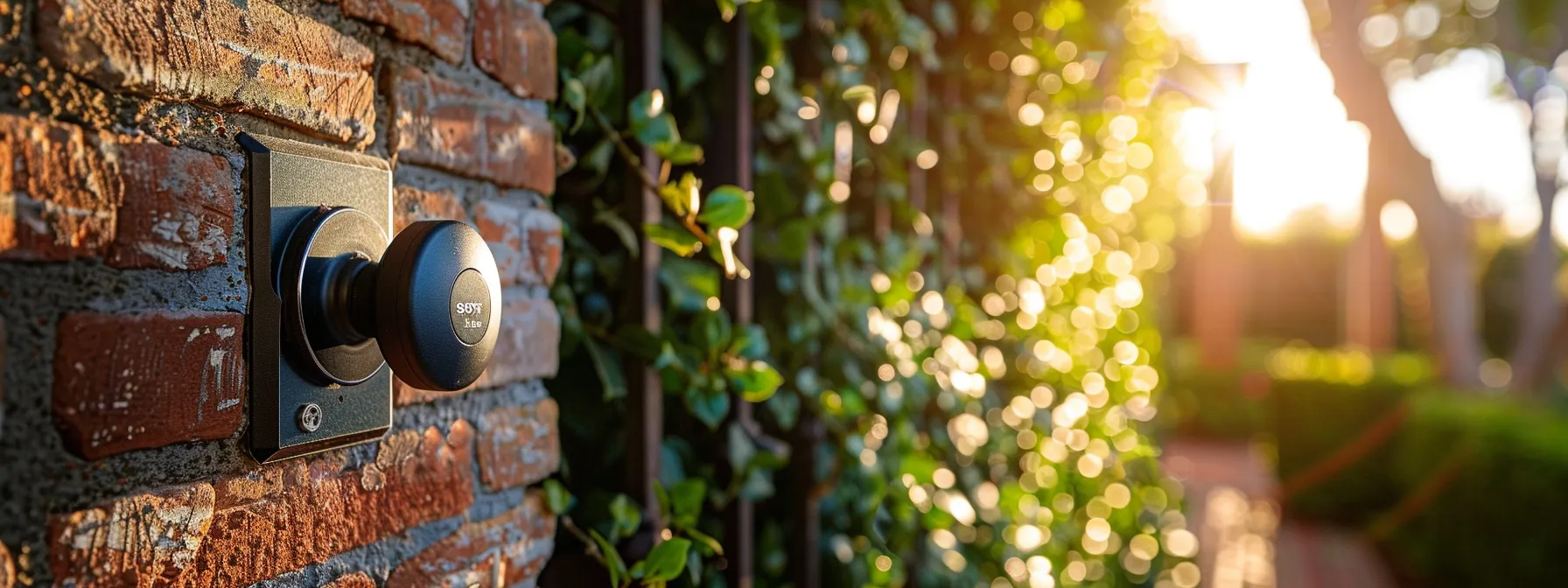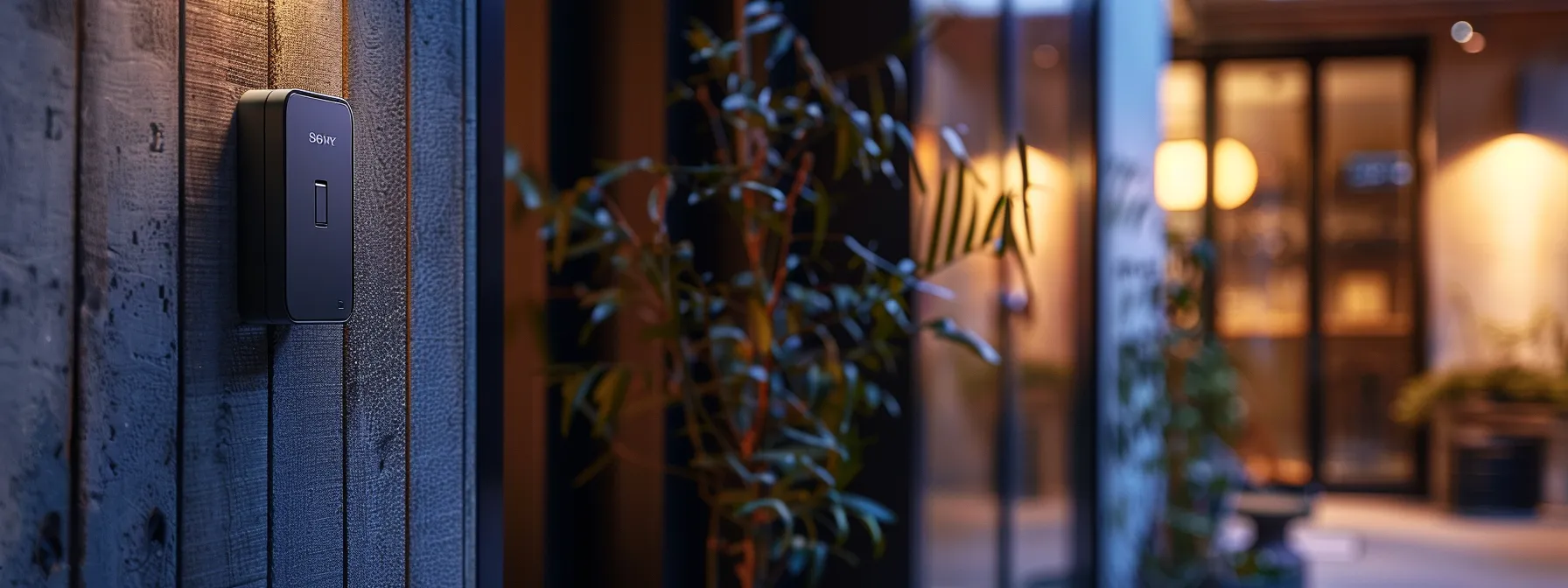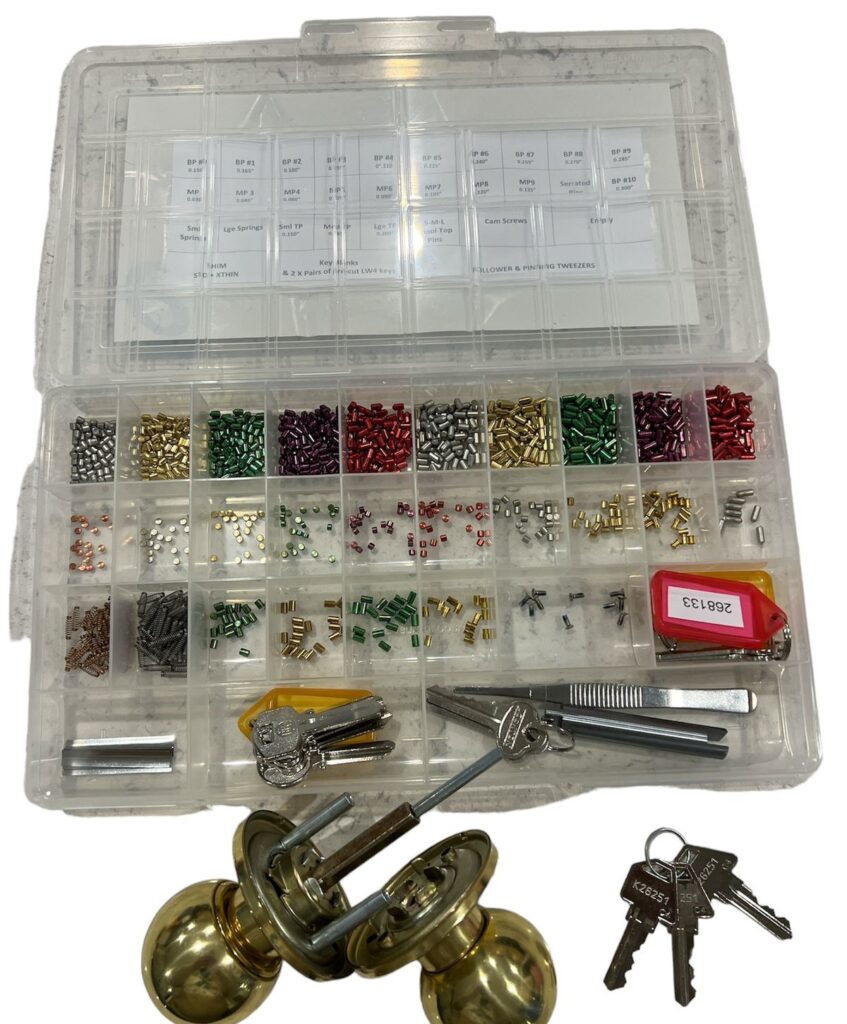Choosing the right spot for a keysafe can be a challenge, especially when safety and accessibility are priorities. This article will delve into the importance of proper keysafe placement, factors to consider when selecting a location, and common mistakes to avoid. By mastering these aspects, readers will enhance their smart home security while ensuring their keys are easily accessible without compromising safety. The content addresses the pain point of finding a secure yet convenient location for a keysafe, providing clear solutions to improve personal and property safety.
Understanding the Importance of Proper Keysafe Placement

The role of location in Car Lockout Assistance security significantly impacts both safety and convenience. Proper placement ensures that smart locks, padlocks, and shackles are accessible while minimizing unauthorized access. Legal considerations also arise, influencing the decision on where to position the keysafe. Understanding these factors is essential for mastering effective keysafe installation.
The Role of Location in Keysafe Security
The location of a keysafe plays a critical role in its overall security, particularly when using a combination lock. Ideally, the keysafe should be installed on a sturdy wall that is less visible to potential intruders, as this minimizes the risk of unauthorized access. Choosing a durable, steel keysafe also enhances security, ensuring that it can withstand tampering while remaining accessible for authorized users.
Impact of Placement on Accessibility
The placement of a keysafe has a direct impact on accessibility, especially during emergencies. A well-located keysafe should be easily reachable for authorized users, allowing quick access in times of need, such as letting in emergency services or trusted individuals. Additionally, ensuring that home insurance covers the keysafe’s installation can provide peace of mind for customers who prioritize security while also considering convenience.
Legal and Safety Considerations
Legal and safety considerations play a vital role when determining the ideal placement for a keysafe or lockbox. For instance, ensuring compliance with local regulations regarding access points can prevent potential legal issues, while choosing a stainless steel lockbox enhances durability and security. Additionally, a keypad entry system can provide accessible yet secure access for trusted individuals, addressing safety concerns and allowing homeowners to maintain control over who enters their property.
- Assess local regulations to avoid legal complications.
- Select durable materials like stainless steel for added security.
- Utilize keypad entry systems for controlled access.
Placement is key. Next, the reader will discover the critical factors to consider when choosing the perfect spot for a keysafe.
Factors to Consider When Choosing a Keysafe Location

When selecting an optimal location for a keysafe, several critical factors must be considered to ensure security and accessibility. Assessing visibility to passersby helps mitigate unauthorized access, while evaluating environmental exposures protects the keysafe from potential damage. Proximity to entry points enhances accessibility for authorized users, and the structural integrity of mounting surfaces ensures stability. Compliance with local regulations further guarantees a secure installation.
These considerations will guide homeowners in achieving the right balance between access control and security. Each factor supports the effectiveness of the keysafe, whether it’s a metal model or one connected to a mobile app for added functionality.
Assessing Visibility to Passersby
When assessing visibility to passersby, it is essential to place the keysafe in a less conspicuous location. This strategy minimizes the likelihood of unauthorized access, keeping the keysafe secure while remaining accessible to those who need it. For instance, working with professionals like Unlock Master Locksmiths can provide insights on optimal placement that balances accessibility with safety, ensuring efficient use of both Mobile Locksmith Services and Automotive Locksmith Services for emergencies such as car lockouts.
- Choose discreet locations for keysafe installation.
- Consult with locksmith professionals for expert advice.
- Balance accessibility with security when selecting a spot.
- Ensure quick access for authorized individuals during emergencies.
Evaluating Environmental Exposures
Evaluating environmental exposures is crucial when selecting a keysafe location. Outdoor elements, such as rain, wind, and sunlight, can affect the durability of the keysafe over time, leading to potential malfunctions or damage. Employing Residential Locksmith Services ensures that homeowners receive expert advice on the best materials and placement strategies, helping to protect the keysafe from environmental factors while maintaining accessibility for trusted users.
Proximity to Entry Points
Proximity to entry points is a crucial factor when selecting a location for a keysafe installation. A keysafe should be positioned close to main access areas, allowing authorized users to reach it swiftly, especially in emergencies. Careful consideration of this placement not only enhances convenience but also maintains security, ensuring that trusted individuals can access the keys without delay while reducing the risk of unauthorized access.
Structural Integrity of Mounting Surfaces
Ensuring the structural integrity of mounting surfaces is vital for the successful installation of a keysafe. The surface must be solid enough to support the weight and secure the unit against potential tampering. Homeowners should opt for durable walls made of brick or concrete, as these materials provide stability and resistance against environmental factors that may undermine the keysafe’s functionality.
- Assess the strength of the wall or surface for mounting.
- Choose materials like brick or concrete for enhanced durability.
- Regularly inspect the mounting site to ensure ongoing security.
Compliance With Local Regulations
Compliance with local regulations is essential when selecting a location for a keysafe, as it helps avoid potential legal issues. Homeowners must ensure that their keysafe installations adhere to zoning laws and any specific residential or commercial guidelines in their area. Working with experienced locksmith professionals can provide valuable insights into these regulations, ensuring a compliant and secure keysafe setup that meets both safety and insurance standards.
- Understand local zoning laws that affect keysafe installation.
- Consult with locksmith experts for guidance on compliance.
- Maintain alignment with residential and commercial guidelines.
Choosing the right key safe location requires careful thought. Now, let’s walk through a simple guide to find the perfect spot.
Step-by-Step Guide to Selecting the Ideal Spot

When selecting the ideal spot for a keysafe, it’s crucial to undertake a systematic approach. Begin by surveying the property to identify potential locations, then analyze the strengths and weaknesses of each spot. Consulting with security professionals can provide valuable insights, while testing accessibility ensures authorized users can reach the keysafe efficiently. Finally, the best location should be selected based on this comprehensive evaluation.
Survey Your Property for Potential Locations
Surveying the property for potential keysafe locations is an essential first step in ensuring both security and accessibility. Homeowners should inspect areas near main entry points while considering visibility from the street and proximity to trusted individuals. Identifying spots that maintain a discreet profile can help mitigate the risk of unauthorized access and provide peace of mind, particularly when emergency services may need swift entry:
Analyzing Strengths and Weaknesses of Each Spot
Analyzing the strengths and weaknesses of each potential keysafe installation spot is essential for ensuring optimal security and accessibility. For example, a location near an entry point may provide quick access for authorized individuals, but if it is too exposed, it could attract unwanted attention from intruders. On the other hand, a discreet location might limit visibility and accessibility during emergencies. Assessing these factors helps homeowners make informed decisions that effectively balance ease of access with security concerns, leading to a successful keysafe installation.
Consulting With Security Professionals
Consulting with security professionals can significantly enhance the selection of a keysafe installation spot. Experienced locksmiths can provide tailored advice based on the unique layout of a property, ensuring that the chosen location balances security with accessibility. Their expertise can help homeowners identify discreet yet convenient areas for keysafe installation, which may not be immediately apparent, thus optimizing both safety and ease of use:
Testing Accessibility in Chosen Locations
Testing accessibility in chosen locations is crucial to ensuring that the keysafe installation meets both security and practical needs. Homeowners should physically approach the selected spots to assess how easily they can access the keysafe during various scenarios, including emergencies. This evaluation process should take into account whether the location allows for quick retrieval while maintaining a discreet profile to deter unauthorized access.
Finalizing Your Selection
Finalizing the selection for a keysafe installation involves carefully considering all previously assessed options. Homeowners should weigh factors such as accessibility, visibility, and environmental exposure, ensuring the chosen location aligns with both security needs and ease of access. Engaging a qualified locksmith can provide valuable insight, helping to confirm that the final decision meets safety standards while addressing any potential vulnerabilities, ultimately leading to a successful and effective keysafe installation.
With the spot chosen, one must tread carefully. Mistakes in installation could turn safety into risk; let’s uncover what not to do.
Common Mistakes to Avoid in Keysafe Installation

Common mistakes in keysafe installation can severely compromise security and accessibility. Placing the keysafe in obvious locations often leads to unauthorized access, while ignoring the quality of the mounting surface may result in eventual failure of the unit. Overlooking weather protection can damage the keysafe, and neglecting to update access codes reduces security. Each of these points requires careful attention for effective installation.
Placing the Keysafe in Obvious Locations
Placing a keysafe in obvious locations significantly undermines security. Many homeowners mistakenly choose spots that are easily visible, such as near front doors or common entry points, making it easy for potential intruders to locate and compromise. Instead, it is crucial to select discreet positions that are not immediately noticeable, thereby safeguarding the keys while ensuring authorized users can access them without difficulty, especially during emergencies.
Ignoring the Quality of Mounting Surface
Ignoring the quality of the mounting surface can greatly undermine the effectiveness of a keysafe installation. If the keysafe is affixed to a weak or unstable surface, it may become dislodged or fail during tampering attempts, compromising the security it is intended to provide. Homeowners should prioritize solid surfaces, such as brick or concrete, which offer durability and resistance to environmental elements, ensuring the keysafe remains secure and effective over time:
- Choose a solid surface for installation.
- Ensure the mounting surface can support the keysafe weight.
- Regularly inspect the installation site for any signs of deterioration.
Overlooking Weather Protection
Overlooking weather protection during keysafe installation can lead to significant issues, impacting both the functionality and longevity of the unit. Exposure to elements such as rain, sunlight, and heat can cause wear and tear over time, potentially leading to malfunctions or damage that compromises security. Homeowners must evaluate the keysafe’s location carefully, opting for areas shielded from direct weather impact to ensure reliable operation and extend the life of the device:
Neglecting to Update Access Codes
Neglecting to update access codes for a keysafe can lead to serious security vulnerabilities. Homeowners often forget that previous occupants or those who may have had temporary access still possess the old codes, creating risks of unauthorized entry. Regularly changing access codes enhances the safety and integrity of the keysafe, providing peace of mind for users concerned about potential breaches.
Mistakes can leave a key safe vulnerable. To truly bolster security, one must consider how and where to place it wisely.
Enhancing Security With Strategic Keysafe Placement

Effective keysafe placement enhances security through multiple strategies. Utilizing camouflage techniques can conceal the keysafe from view, while integration with home security systems offers added protection. Limiting awareness of the keysafe’s presence further deters unauthorized access. Regular inspections for tampering ensure continued reliability and security, providing homeowners with peace of mind.
Utilizing Camouflage Techniques
Utilizing camouflage techniques for keysafe installation involves strategically placing the keysafe in locations that blend seamlessly with their surroundings. Homeowners can enhance security by positioning the keysafe behind plants, near outdoor furniture, or beneath eaves, making it less noticeable to potential intruders. This thoughtful approach not only protects the keysafe from prying eyes but also provides authorized users with convenient access, ensuring peace of mind in both safety and functionality.
Integrating With Home Security Systems
Integrating a keysafe with home security systems significantly enhances overall safety and access control. This connection enables real-time monitoring and alerts, providing homeowners with immediate notifications whenever the keysafe is accessed. By combining these systems, users can ensure that only authorized individuals receive access, thereby reducing the risk of unauthorized entry while maintaining peace of mind.
Limiting Awareness of Keysafe Presence
Limiting awareness of the keysafe presence is critical for enhancing security during installation. By positioning the keysafe in discreet locations—such as around less visible areas of the property—homeowners can significantly reduce the likelihood of theft or unauthorized access. This strategic placement ensures that only trusted individuals are aware of the keysafe’s location, allowing for efficient entry during emergencies while maintaining the security of the home.
Regular Inspections for Tampering
Regular inspections for tampering are essential in maintaining the security of a keysafe installation. Homeowners should routinely check the keysafe for signs of wear, damage, or unusual marks that could indicate it has been tampered with. This proactive approach not only helps in early detection of potential security breaches but also fosters a greater sense of safety, ensuring that access remains controlled and limited to authorized individuals.
After securing the keysafe in the right spot, the work is not over. Keeping it in top shape and monitoring its use is just as crucial for lasting security.
Maintaining and Monitoring Your Keysafe After Installation

Maintaining and monitoring a keysafe after installation is crucial for ensuring ongoing security and accessibility. Performing routine maintenance checks helps identify wear or damage that could compromise the unit. Regularly updating access codes enhances security for authorized users, while educating them about proper usage further protects the keysafe. Additionally, responding promptly to any security alerts fosters a safer environment for everyone involved.
Performing Routine Maintenance Checks
Performing routine maintenance checks on a keysafe is essential for ensuring its longevity and effective operation. Homeowners should regularly inspect the device for any signs of wear, such as rust or damage, and ensure that the locking mechanism functions smoothly. Additionally, checking the mounting surface for stability can prevent potential security breaches before they occur:
Updating Access Codes Periodically
Updating access codes periodically is a fundamental practice for maintaining the security of a keysafe. Homeowners should consider changing the codes after any significant changes, such as moving to a new property or when a trusted individual no longer requires access. By regularly refreshing these codes, it becomes easier to control access and enhance overall safety, ensuring that only authorized users can retrieve keys when necessary.
Educating Authorized Users
Educating authorized users about the proper use of a keysafe is crucial for maintaining security and ease of access. They should be informed about how to operate the unit effectively, including how to enter access codes and what steps to take in case of malfunction. Providing this knowledge helps users understand the importance of safeguarding the keys and reinforces the overall security system, ultimately preventing unauthorized access and ensuring that assistance can be gained promptly when needed.
Responding to Security Alerts Promptly
Responding to security alerts promptly is vital for maintaining the integrity of a keysafe installation. Homeowners should monitor alerts closely, as immediate action can prevent unauthorized access and enhance overall security. For instance, if a sensor indicates tampering or an unauthorized entry attempt, quickly assessing the situation and contacting a locksmith can help secure the area before any potential breach occurs, ensuring the safety of the property and its occupants.
Conclusion
Mastering keysafe installation by finding the ideal spot is crucial for enhancing security and accessibility. Proper placement minimizes unauthorized access while ensuring quick retrieval for trusted users during emergencies. By considering factors such as visibility, environmental exposure, and compliance with local regulations, homeowners can significantly improve their keysafe’s effectiveness. Ultimately, strategic installation fosters peace of mind, protecting both property and occupants.


